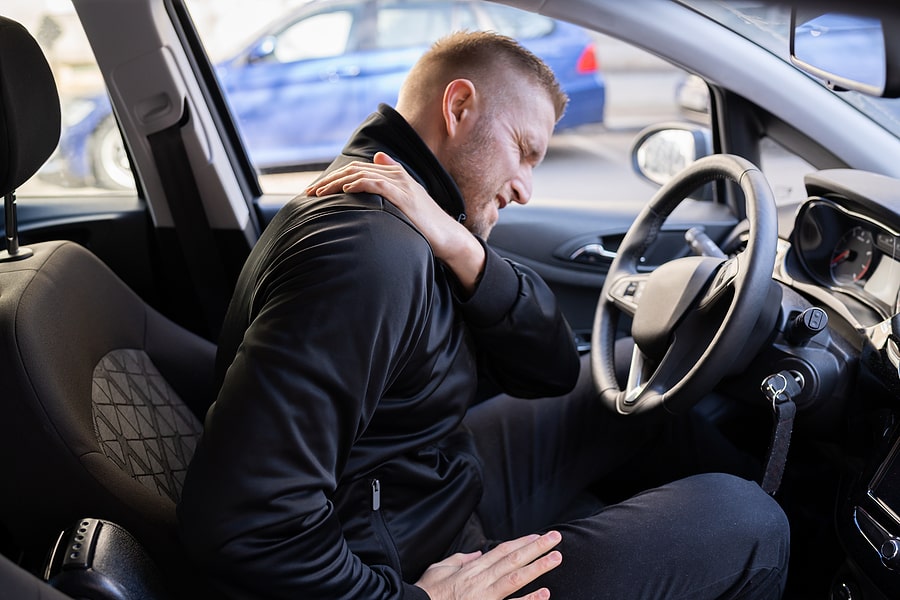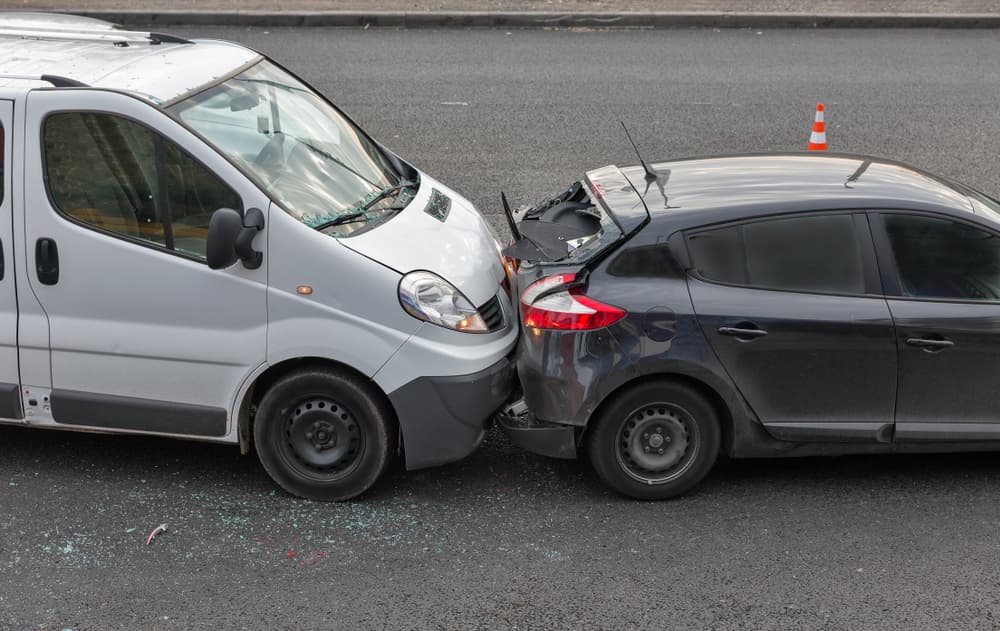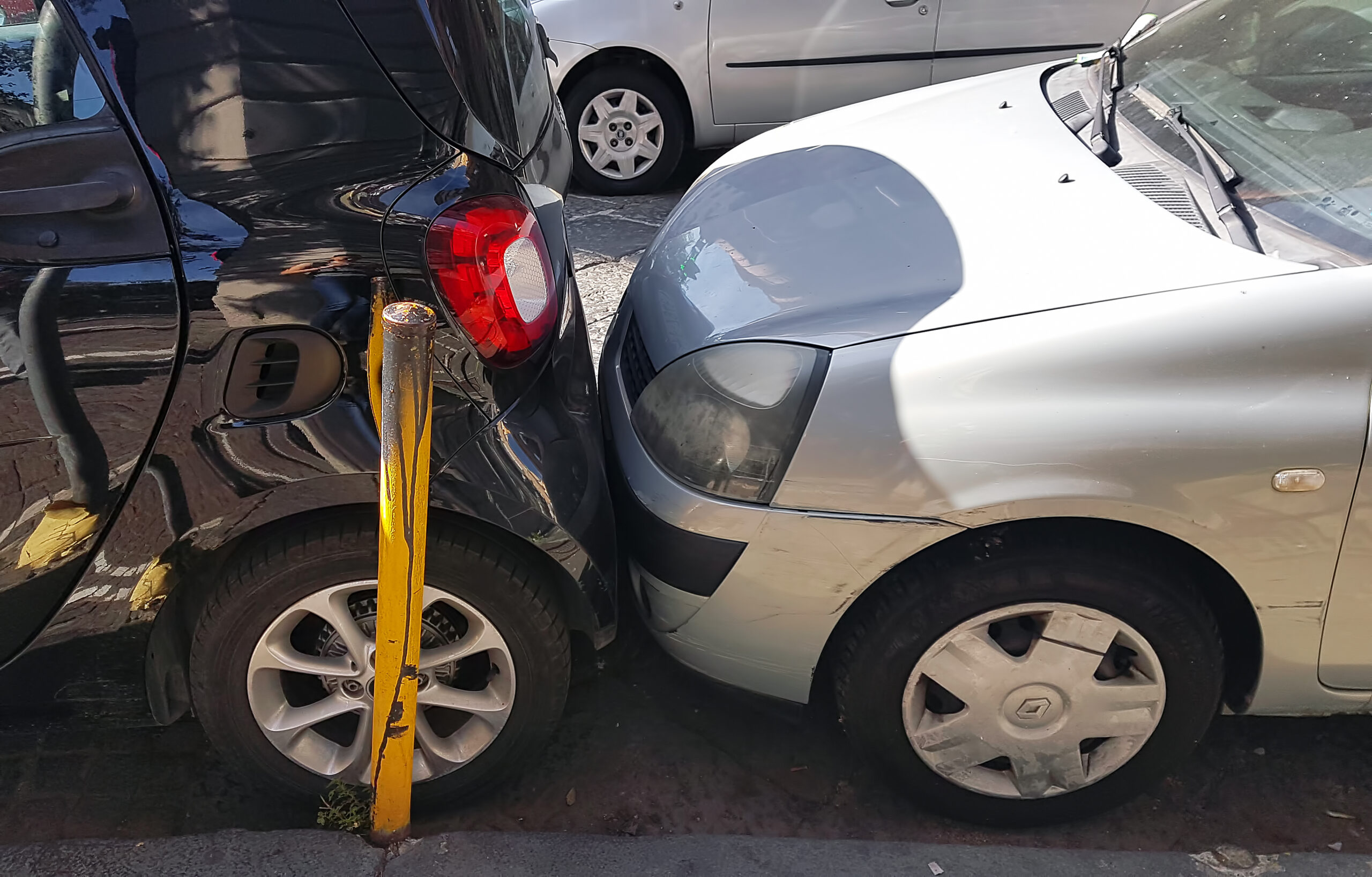 Back and neck injuries from motor vehicle accidents could require additional medical care and long-term therapy, and even then, you might not fully recover from those injuries. Long-term injuries can last a year or more, while permanent injuries last for the rest of your life.
Once you injure your back, you might require additional surgeries and might have back pain that lasts for years or even for the rest of your life. If a car accident caused your back and/or neck injuries, you need to be sure that the settlement you receive from the at-fault driver’s insurance, at-fault driver, or the driver’s employer covers all past and future medical costs for injuries associated with the accident. After a vehicle accident, discuss your legal options with a car accident lawyer.
The force of impact generated by a collision between two vehicles is often too great for the human body to withstand. That is why car accidents may result in serious neck and back injuries and other types of trauma. The severity of back and neck injuries varies depending on the type of the crash, the speed of the vehicles, and other factors.
Such injuries can result in lifelong medical care and substantial monetary losses for years or decades to come. For this reason, many victims of automobile crashes wonder, “How much money can I get from my back or neck injury after the accident?”
If you want to assess the value of your car accident claim stemming from a car crash, consider contacting a knowledgeable attorney who can help you calculate a fair settlement value in your specific case.
Back and neck injuries from motor vehicle accidents could require additional medical care and long-term therapy, and even then, you might not fully recover from those injuries. Long-term injuries can last a year or more, while permanent injuries last for the rest of your life.
Once you injure your back, you might require additional surgeries and might have back pain that lasts for years or even for the rest of your life. If a car accident caused your back and/or neck injuries, you need to be sure that the settlement you receive from the at-fault driver’s insurance, at-fault driver, or the driver’s employer covers all past and future medical costs for injuries associated with the accident. After a vehicle accident, discuss your legal options with a car accident lawyer.
The force of impact generated by a collision between two vehicles is often too great for the human body to withstand. That is why car accidents may result in serious neck and back injuries and other types of trauma. The severity of back and neck injuries varies depending on the type of the crash, the speed of the vehicles, and other factors.
Such injuries can result in lifelong medical care and substantial monetary losses for years or decades to come. For this reason, many victims of automobile crashes wonder, “How much money can I get from my back or neck injury after the accident?”
If you want to assess the value of your car accident claim stemming from a car crash, consider contacting a knowledgeable attorney who can help you calculate a fair settlement value in your specific case.
Types of Neck and Back Injuries After Car Accidents
According to a 2019 study on Transportation Safety and Environment, neck injury is one of the most common types of car accident injuries. However, back injuries are also not uncommon in motor vehicle crashes. The type and severity of back and neck injuries depend on the circumstances of the car accident. Victims of automobile crashes often sustain the following types of back and neck injuries:- Whiplash. Whiplash accounts for the vast majority of all injuries suffered by victims of rear-end collisions. This neck injury occurs when a person’s head moves in a rapid back-and-forth movement, stretching and tearing the muscles and tendons in your neck.
- Neck strain or sprain. These injuries are also common diagnoses among victims of car accidents. Strains involve the stretching and tearing of the fibers in a neck muscle or tendon, while sprains involve stretched or torn ligaments.
- Lumbar sprains. If a victim of a car crash feels lower back pain, they may have suffered a lumbar sprain caused by the tearing of ligaments from their attachments.
- Spinal cord injury. Injuries to any of the structures in the lumbar spine are some of the most dangerous ones that may require surgery. Depending on the severity of the injury, a person can be paralyzed temporarily or permanently.
- Pinched nerves in the neck or back. This is also a common diagnosis among car accident victims. The stress generated by a car accident can result in the pinching of the nerves in the back or neck.
- Spinal stenosis. When left untreated after a car crash, back injuries can result in spinal stenosis. This progressive disease is the result of the narrowing of the spaces within your spine, which puts a tremendous amount of pressure on the nerves in the spine.
- Neck fracture. A neck fracture occurs when one or several of the neck bones are fractured or broken as a result of a collision between vehicles.
- Disc herniation. Victims of car accidents often suffer from herniated vertebral discs. The force of impact in a car crash can cause the vertebrae to push into a victim’s spinal canal, where it may compress.
Symptoms of a Neck or Back Injury After a Car Accident
Symptoms of a back or neck injury depend on the type and severity of the trauma. When you go to a hospital, a doctor may make a diagnosis and prescribe treatment based on your description of the symptoms. Some of the most common symptoms associated with back and neck injuries include:- Pain or discomfort in the back, neck, or shoulders
- Numbness in the neck or back
- Limited range of motion
- Difficulty carrying or lifting objects
- Headaches
- Poor concentration
- Stiffness
- Muscle spasms
- Burning sensation in the back or neck
- Lack of mobility
- Weakness
- Difficulty standing or walking.
- A bump near the site of injury
- Redness, inflammation, or swelling in the affected area
What Do You Need to Prove When Seeking Compensation for a Back or Neck Injury?
Proving the extent of your back and neck injury as well as documenting your expenses and damages are two critical steps when it comes to seeking compensation for your car accident injuries. When filing a personal injury claim against the at-fault driver’s insurance company, you will need to support your claim with all available documentation and evidence to ensure that you receive the maximum amount of money. The more evidence you can gather, the stronger your car accident claim and the higher the chance of receiving a fair settlement offer. Back and neck injuries are often difficult to prove without diagnostic tests such as MRIs and X-rays. If you do not present sufficient medical records to substantiate your claim, an insurance company can deny coverage or pay you an inadequate amount of money. In fact, an injured party must also prove that the other party caused or contributed to their injuries. Illinois law defines fault as negligent, reckless, wanton, or willful conduct that becomes a proximate cause of bodily injury, death, or property damage to another person (735 ILCS 5/2-1116). Proving fault may require demonstrating proof that the other driver was negligent in causing the accident that led to your back or neck injury. A negligence-based personal injury claim involves the following four elements:- Duty. The other driver owed you a duty of care to operate the vehicle reasonably and avoid causing harm.
- Breach. The driver breached the duty of care because of their negligent conduct (e.g., the driver failed to maintain a safe following distance when he rear-ended your car).
- Causation. The driver’s negligent conduct led to the accident that caused your back or back injury.
- Damages. You suffered actual damages following the collision.
Types of Damages
After a car accident, the at-fault driver or his/her insurance company might have to pay damages. More often than not, the insurance company will try to pay the least amount possible to protect its bottom line. Insurance companies are in business to make money, after all. For this reason, it is usually not a good idea to try to settle with the insurance company without consulting with a lawyer first. If you have long-term or permanent injuries, settling with the insurance company yourself is probably the worst thing you can do. Car accident attorneys review your medical records and might work with other professionals to come to a number that covers your past and future medical costs and other losses and expenses associated with automobile accidents. When seeking compensation for your neck or back injury after a car crash, the recoverable damages can include:- Economic (special) damages
- Non-economic (general) damages
- Punitive damages
1. Economic (Special) Damages
Special damages have a set cost attached to them. These damages include:- Past medical expenses. These are costs associated with the accident, including but not limited to ambulance or emergency helicopter air ambulance, hospital costs, doctor’s office visits, and other medical expenses.
- Future medical costs. Neck and back injuries may require additional surgeries and physical and/or cognitive therapy to help with recovery. If your doctor recommends therapy for injuries sustained in an accident, you can recover compensation for future medical costs. Future medical costs also cover additional doctors’ appointments throughout the recovery.
- Past lost wages. If your injuries preclude you from working, you might be entitled to past lost wages and other lost employment benefits.
- Future lost wages. If your injuries prevent you from working for the long term, you might be entitled to future lost wages. If you can go back to work but are unable to do the job that you previously did and must take a lower-paying job, future lost wages might cover the difference in your salary.
- Reimbursement for property damaged during the accident. Reimbursement might cover the replacement of personal property, including your vehicle, or it might cover the repair of your vehicle and other personal property the accident damaged.
2. Non-Economic (General) Damages
Non-economic, or general, damages include those that do not have a specific dollar amount attached to them. In most cases, you might have to establish that your injuries are long-term or permanent to get non-economic damages, which might include:- Pain and suffering. The pain and suffering cannot be short-term. A back injury can qualify for pain and suffering if your back or neck will never be the same, and you suffer pain for more than a year after the accident.
- Loss of companionship. The at-fault driver might have to pay for loss of companionship if you cannot do things with your family, including, but not limited to, playing with your children, going to events with your family, and other activities you would normally do together.
- Loss of consortium. You might receive extra compensation if you are unable to have a physical relationship with your spouse due to your accident injuries.
- Loss of normal life. You might receive extra compensation if you can no longer do everyday activities, such as home maintenance, shopping, cleaning your home, mowing the yard, and other maintenance activities that you used to do regularly.
Punitive Damages
Under Illinois law, punitive damages are only available when the at-fault party engages in willful, wanton, or outrageous conduct (735 ILCS 5/2-1115.05). Punitive damages are only available when the at-fault party’s actions were grossly negligent or intentional. This type of award is meant to punish the defendant in the hopes that it dissuades the defendant from ever again engaging in the actions that caused the accident. You, as the plaintiff, must prove that the defendant’s actions were intentional or grossly negligent. For example, a drunk driver should have known that he or she could cause an accident by driving while intoxicated. A person texting knows that distracted driving could cause an accident. These are just two examples of behavior that a court may construe as gross negligence. Additionally, if the court does not award you general damages, you cannot collect punitive damages. If you file a separate action for punitive damages, the court will dismiss that action if it doesn’t award general damages. Furthermore, punitive damages, in most cases, cannot exceed three times the amount ordered for economic damages.What Is the Average Settlement for a Back or Neck Injury?
No two back or neck injuries are the same. For this reason, the amount of money a victim can get for their injury depends on the exact type of the injury, the severity of the injury, the age of the victim, their prognosis, the cost of the medical treatment, and many other factors. As a rule of thumb, the more severe the back or neck injury, the higher the settlement amount the victim can ask for when filing a personal injury claim against the at-fault party’s insurance company or filing a lawsuit. When an automobile accident results in whiplash or a minor injury, the settlement amount generally ranges from $1,000 to $10,000 based on calculations of the injured person’s medical treatment, reimbursement for lost wages, and other damages and losses. The recoverable amount also depends on the insurance policy limits. If another party was negligent or otherwise at fault for causing your back or neck injury in the car accident, it might make sense to file a lawsuit against that person to recover the maximum amount of compensation. If your goal is to get fully compensated for your losses and damages stemming from your back or neck injury, consider contacting an experienced car accident attorney to explore your compensation options.The Value of Your Case

Abels & Annes, P.C. 100 N LaSalle St #1710 Chicago, IL 60602 (312) 924-7575



